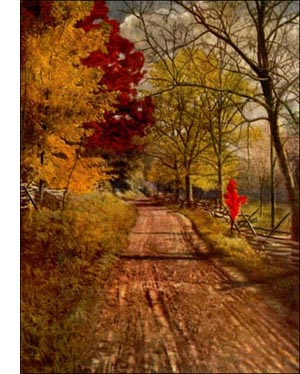Mountain Live Oak or Maul Oak or Gold Cup Oak Tree
 Mountain Live Oak, Maul Oak, Gold-cup Oak (Quercus chrysolepis, Liebm.)-A low, broad tree, with drooping limbs, scrubby in high altitudes, 40 to 50 feet high, rarely 100 feet, and 100 to 150 feet across; trunk 2 to 6 feet through. Bark pale grey or reddish brown, flaky. Wood pale brown, close grained, tough, strong, hard to work. Buds broadly ovate, small, scaly. Leaves evergreen, oblong, entire, acute, 1 to 2 inches long, bright green, shining above, yellowish pubescent below. Flowers, June; staminate catkins profuse; pistillate, sessile, solitary or few in a cluster; scales golden tomentose. Fruits solitary, 1/2 to 1 1/2 inches long; cups shallow, thick, of triangular scales, concealed by yellow tomentum. Preferred habitat, canon sides and rocky gulches. Distribution, southern Oregon to Lower California, on western slopes of Sierra Nevada and coast mountains, mountains in southern Arizona and New Mexico. Uses: Most valuable timber oak of the Pacific coast. Used for wagons and farm implements.
Mountain Live Oak, Maul Oak, Gold-cup Oak (Quercus chrysolepis, Liebm.)-A low, broad tree, with drooping limbs, scrubby in high altitudes, 40 to 50 feet high, rarely 100 feet, and 100 to 150 feet across; trunk 2 to 6 feet through. Bark pale grey or reddish brown, flaky. Wood pale brown, close grained, tough, strong, hard to work. Buds broadly ovate, small, scaly. Leaves evergreen, oblong, entire, acute, 1 to 2 inches long, bright green, shining above, yellowish pubescent below. Flowers, June; staminate catkins profuse; pistillate, sessile, solitary or few in a cluster; scales golden tomentose. Fruits solitary, 1/2 to 1 1/2 inches long; cups shallow, thick, of triangular scales, concealed by yellow tomentum. Preferred habitat, canon sides and rocky gulches. Distribution, southern Oregon to Lower California, on western slopes of Sierra Nevada and coast mountains, mountains in southern Arizona and New Mexico. Uses: Most valuable timber oak of the Pacific coast. Used for wagons and farm implements.The mountain live oak is not a horticultural tree, beautiful as it would be in the broad, rolling valleys of California. It is a wild thing, untamable as the mountain goat, loving the rocky canon sides and the high terraces on which earthquake and avalanche have left mighty indelible scars. Two thousand feet above sea level these trees begin to appear. On these heights they rear their sturdy, buttressed trunks which soon break into limbs that spread into broad, low domes. The width of these trees is often twice their height, and their resemblance to the live oak of the Southeastern States is striking. Instead of the Spanish moss that decks these Southern trees and gives them such a funereal look, here is nothing to droop but the tree's own long, flexible twigs clad in leaves all yellow-green and shining; which brighten the sunshine that sifts through them. They are lined all summer with yellow down, and the spring catkins and autumn acorn cups give an extra Midas touch to the tree at both ends of the growing season.
There is a wonderful story of struggle and victory mutely but eloquently told by this tree, as it contends with the adverse conditions of soil and weather, grappling the rocky ground with its spreading roots and losing nothing in dignity and character as its size dwindles and it reaches its limit, 5,000 feet. This low, knotty oak chaparral that the mountain climber grasps so thankfully as he faces toward the summit is fringed with yellow tassels in the spring and set in autumn with golden acorn cups, even as are its brethren, the gnarled giants he passed on the terraces 3,000 feet lower down. In the highest elevations, 8,000 to 9,000 feet above the sea, this oak is reduced to a foot in height. This is the "huckleberry oak" of the Sierra Nevada range, variety vaccinifolia, of the parent species. Another dwarf variety, Palmeri, called the Palmer oak, grows on the boundary between California and the lower peninsula.